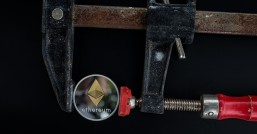In the world of precision engineering and quality control, the magnetic particle inspection device stands out as a reliable and efficient tool. This remarkable instrument, often referred to as the magnetic particle detector or MPI device, leverages the principles of magnetism to identify discontinuities and flaws in ferromagnetic materials. Its ability to detect even the slightest imperfections in metal components is crucial in ensuring the safety and durability of various industrial applications.
The working principle of the magnetic particle inspection device is quite intriguing. It involves the magnetization of the test object, which is typically done by applying a strong magnetic field. This process causes the magnetic lines of force to flow within the material. When a discontinuity or a flaw exists in the material, it disrupts the flow of these lines, creating a leakage field. The magnetic particles, which are applied to the surface of the test object, are then attracted to these leakage fields, forming visible patterns that indicate the presence of flaws.

The device comes in various sizes and configurations, catering to the inspection needs of different industries. From aviation to automotive, pipelines to power generation, the magnetic particle inspection device plays a pivotal role in ensuring the integrity of critical components. Its ability to detect cracks, corrosion, and other imperfections that may compromise the safety of a structure or machine is invaluable.
In the globalized world where trade and communication are seamless, it's essential to understand that the magnetic particle inspection device, or its equivalent in other languages, is a globally recognized tool. In English, it's known as the "magnetic particle inspection device," while in Spanish, it's referred to as "el dispositivo de inspección de partículas magnéticas." In German, it's "das Magnetpartikelprüfgerät," and in French, it's "le dispositif d'inspection des particules magnétiques." Regardless of the language, the objective remains the same: to ensure the highest standards of quality and safety in industrial processes.
The future of the magnetic particle inspection device looks bright. With advancing technology and constant innovation, we can expect even more sophisticated and efficient versions of this inspection tool. As materials science and magnetic principles evolve, so will the capabilities of the MPI device, allowing for even more accurate and thorough inspections.

In conclusion, the magnetic particle inspection device is a crucial component in the world of precision engineering and quality control. Its ability to detect flaws and discontinuities in ferromagnetic materials is a testament to the power of magnetism in industrial applications. As we move forward, this remarkable instrument will continue to play a pivotal role in ensuring the safety and durability of our industrial systems and structures.









发表评论